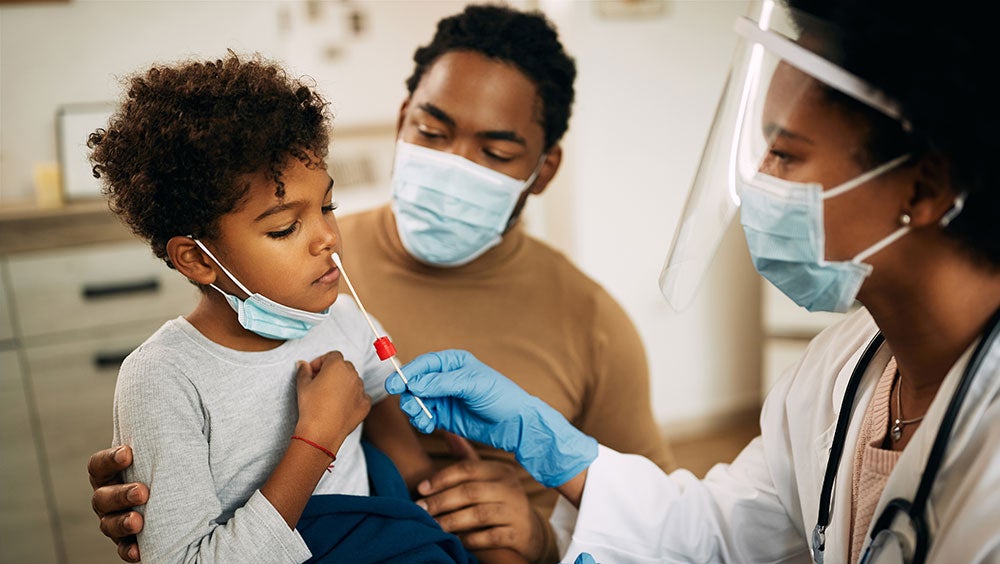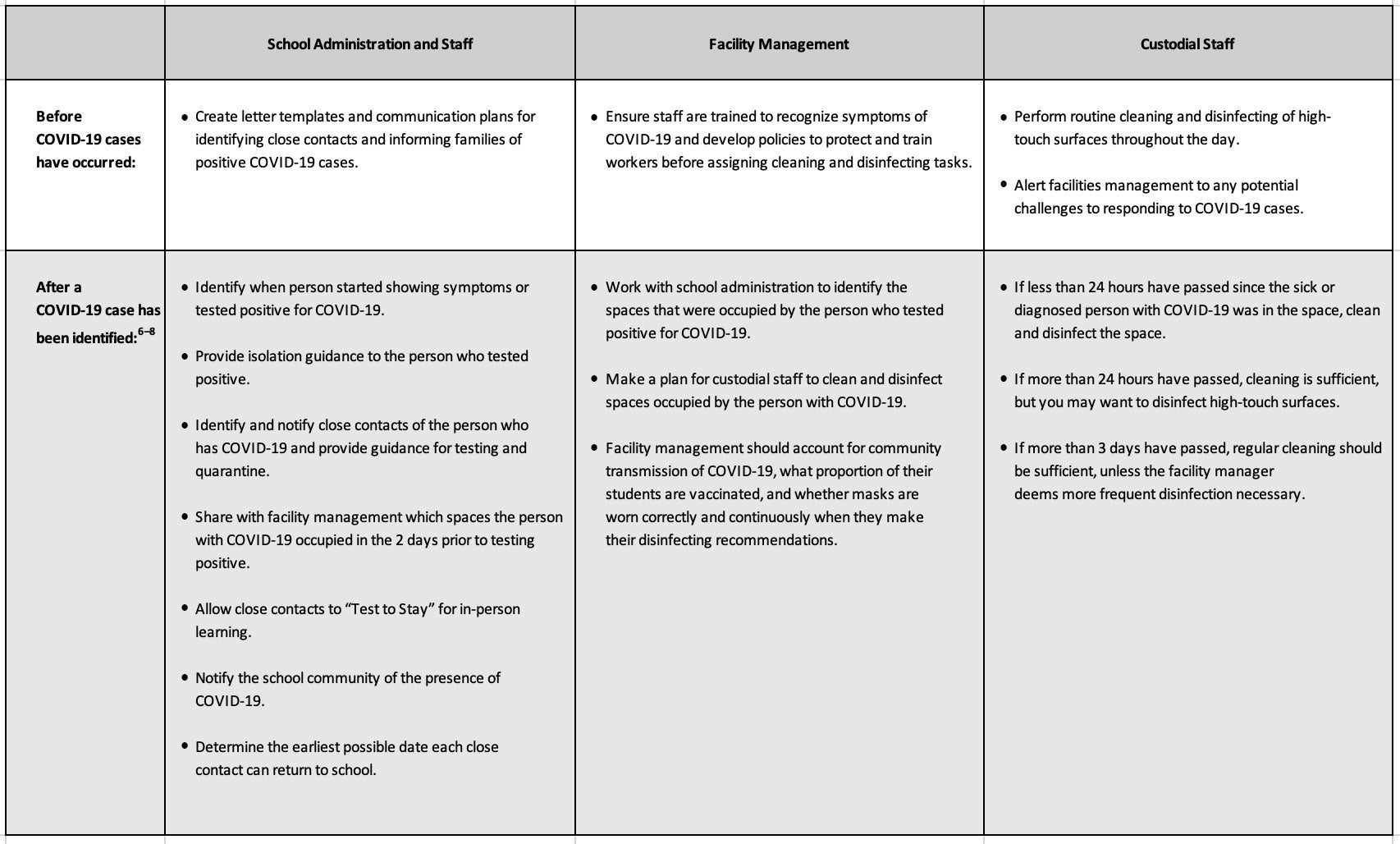Keeping Healthy Kids in School: How CDC’s New Guidance Will Help Maintain In-Person Learning
How CDC’s previous guidance may have forced healthy kids to stay home

Last February, the CDC issued guidance for how to reopen schools safely (we previously covered their guidance here). Integral to their plan was a call for frequent COVID testing, contact tracing, and isolation and quarantine of cases and close contacts. CDC recommended that students, teachers, and staff who might have been exposed to COVID-19 should quarantine, regardless of their test results, for between 7 and 14 days.1 Their guidance also recommended fully remote instruction for counties experiencing high transmission of COVID-19. Despite their best intentions to help schools open, if districts followed the CDC’s guidance, over 90% of them would not have been eligible to return to in-person instruction.
CDC has issued a few updates to address some of these issues, such as shorter or no quarantine for children who were vaccinated and masked, but they had not changed their guidance for quarantine and isolation of other close contacts until now. This recent shift in the CDC’s guidance for testing is a welcome one and is supported by several studies showing that children who are regularly tested for COVID-19 can stay in school in person with little risk of spreading infections to others.2,3
One of the largest studies of over 86 schools in the U.K. found that daily testing for close contacts instead of quarantine did not result in increased COVID-19 infections2 (Young 2021).
“Test to Stay” and reduced isolation recommendations will help keep children in school
“Test to Stay” is a strategy that combines contact tracing and testing at defined intervals (usually day 2 and day 5 after contact with an infected person) to allow students to continue in-person learning. What this means is that students who were close contacts of a person who tested positive for COVID-19 may continue in-person learning if they test negative during the 5-day period following their exposure. Previously, a close contact would have had to stay home and quarantine, regardless of their test results, forcing many healthy children to stay home.
In addition to the new testing strategy, CDC also updated their guidance on quarantine and isolation periods, which has reduced the quarantine period from 10 days to 5 days.4
Altogether, CDC’s updated guidance for operating schools safely during the COVID-19 pandemic includes the following strategies:5
- Promoting vaccination: Vaccination is the most critical strategy to help schools safely resume operations. Schools are encouraged to provide information about COVID-19 vaccination to families and teachers. Recently, vaccines have been approved for children aged 5 and older.
- Consistent and correct use of masks: Universal indoor masking is recommended for all individuals aged 2 and older, regardless of vaccination status.
- Physical distancing: If students are wearing masks or implementing other prevention policies, 3 feet of distance between students is recommended.
- Screening testing: Testing people who do not have symptoms can prevent asymptomatic transmission. Schools may consider many testing strategies. For example, testing 10% of students, or pooled testing of cohorts of students.
- Ventilation: Improving ventilation can reduce the number of virus particles in the air. Schools can access government funds to improve their ventilation if they need financial assistance. To learn more, visit here.
- Handwashing and respiratory etiquette: Children should learn how to wash their hands properly and cover coughs and sneezes.
- Stay home when sick and get tested: Students who test positive for COVID-19 should isolate for 5 days and continue wearing a mask around others for another 5 days. Students and families should follow school protocols for reporting a positive test.
- Contact tracing and quarantine: Regular testing for COVID-19 and tracing close contacts by school staff can help prevent further spread by isolating infected cases and implementing testing for close contacts.
- Cleaning and disinfecting: Per the CDC’s guidance, cleaning once per day is usually sufficient to remove viruses that may be living on surfaces. Disinfectants on EPA List N can be used to remove any remaining germs. If a school has identified a positive COVID-19 case in the last 24 hours, they should clean and disinfect the space, and may disinfect more frequently if their school is in an area of high COVID-19 transmission, or where a large portion of the student body is unmasked and unvaccinated.
Together, this means that students who test negative for COVID-19 will be able to stay in school in-person, and in areas where testing is not available, students will not have to quarantine for as long and can return to in-person learning faster.
What to do when a COVID-19 case occurs in a school
Given the rapid spread of the Omicron variant, it is not a matter of if, but when a COVID-19 case will happen in every school. The custodial staff, facility management, and school administration all need to be prepared to coordinate with each other to handle these cases. To help illustrate how these three disciplines can work together to respond to a COVID-19 case in a school, the table below compiles guidance from multiple CDC resources and our own recommendations.

For more information about building a comprehensive cleaning and disinfecting plan in schools, please see our K-12 Cleaning and Disinfection Protocol Guide
REFERENCES
1. Centers for Disease Control and Prevention. (2021). Operational strategy for k-12 schools through phased mitigation. Retrieved February 12, 2021, from https://www.cdc.gov/coronavirus/2019-ncov/community/schools-childcare/operation-strategy.html
2. Young BC, Eyre DW, Kendrick S, et al. Daily Testing for Contacts of Individuals with SARS-CoV-2 Infection and Attendance and SARS-CoV-2 Transmission in English Secondary Schools and Colleges: An Open-label, Cluster-randomised Trial. The Lancet. 2021; 398(10307)
3. Harris McCoy K, Lee V, Munna C, et al. A ‘Test to Stay’ Quarantine Strategy among Exposed Students Does Not Increase SARS-CoV-2 Transmission in Transitional Kindergarten through Grade 12 Schools in Los Angeles County, August 16, 2021 – October 31, 2021. MMWR Morb Mortal Wkly Rep.2021
4. Centers for Disease Control and Prevention. (2022). What You Should Know About COVID-19 Testing in Schools. Retrieved January 6, 2022, from https://www.cdc.gov/coronavirus/2019-ncov/community/schools-childcare/what-you-should-know.html
5. Centers for Disease Control and Prevention. (2022). Quarantine and Isolation. Retrieved January 9, 2022, from https://www.cdc.gov/coronavirus/2019-ncov/your-health/quarantine-isolation.html
6. Centers for Disease Control and Prevention. (2022). Guidance for COVID-19 Prevention in K-12 Schools. Retrieved January 6, 2022, from https://www.cdc.gov/coronavirus/2019-ncov/community/schools-childcare/k-12-guidance.html
7. Centers for Disease Control and Prevention. (2022). Responding to COVID-19 Cases in K-12 Schools: Resources for School Administrators. Retrieved January 6, 2022, from https://www.cdc.gov/coronavirus/2019-ncov/community/schools-childcare/k-12-contact-tracing/guide.html
8. Centers for Disease Control and Prevention. (2021). Cleaning and Disinfecting Your Facility. Retriever November 15, 2021, from https://www.cdc.gov/coronavirus/2019-ncov/community/disinfecting-building-facility.html#certain-conditions


